#1: Get Photoelectric Smoke Alarms
There has already been two deadly fires in Minneapolis this year, both occurring within a month of each other. One left five children dead on February 14th, and another left two adults dead on March 11th. In both cases, smoke alarms were present.
The vast majority of residential smoke alarms are ionization alarms, which take a long time to respond to smoldering fires. In many cases, they respond too late.
There is a different type of smoke alarm, available everywhere that smoke alarms are sold, which does not have this problem. It’s called a photoelectric smoke alarm. If you don’t have photoelectric smoke alarms installed in your home, get them. They’re less prone to nuisance alarms and they respond to smoldering fires an average of 30 minutes faster.
Photoelectric smoke alarms are also not much more expensive than ionization smoke alarms. The photo below shows a price tag at Costco, selling a two-pack for $15.99.
I blogged about these smoke alarms last year (Photoelectric Smoke Alarms Are All You Need), where I included a couple of compelling news videos that should be enough to convince anyone who watches them to install photoelectric smoke alarms. Photoelectric smoke alarms are currently required in Massachusetts, Maine, and Vermont. All new smoke alarms in Iowa must be dual-sensor smoke alarms, which must have a photoelectric sensor.
- Boston Deputy Fire Chief Jay Fleming is a huge proponent of photoelectric smoke alarms. When news stories come out about people dying in fires, Jay reaches out to that community urging them to make changes.
- San Bruno home inspector Skip Walker is leading the charge in the home inspection community. He spends his days inspecting houses and his evenings campaigning for photoelectric smoke alarms.
- The World Fire Safety Foundation calls ionization smoke alarms “deadly”.
- The International Association of Fire Fighters advocates the use of photoelectric smoke alarms.
- The American Society of Home Inspectors advocates the use of photoelectric smoke alarms.
Again, if you don’t have photoelectric smoke alarms in your home, get them.
#2: Locate Smoke Alarms Properly
At a minimum, smoke alarms should be installed inside of each bedroom, and in at least one common area on every level.
The manufacturers installation instructions should be followed when installing smoke alarms. The best place for a smoke alarm is typically on the ceiling, in the middle of the room. If the smoke alarm is going to be installed on a wall or on the ceiling near a wall, don’t place it too close to the corner. Most manufacturers recommend locating smoke alarms at least 4″ away from corners.
When installing smoke alarms on a sloped or peaked ceiling, use the diagram below for guidance.
#3: Replace Old Smoke Alarms
Smoke alarms should be replaced every ten years. Many smoke alarms have the date on the back of the alarm. For example, the smoke alarm shown below was manufactured in 2001.
If you can’t find a date on the back, assume it’s over ten years old and replace it. Because CO alarms are only good for five or seven years, I don’t recommend buying smoke alarm / CO alarm combo units. Buy individual alarms.
#4: Get Wireless Smoke Alarms For Older Homes
While homes built since 2007 have interconnected, hardwired smoke alarms with battery backups, older homes typically just have independent battery operated smoke alarms. If a smoke alarm sounds in a basement and the occupants are sleeping on the second floor, will it wake them up? That’s where wireless smoke alarms come in. These smoke alarms communicate with each other just like interconnected hardwired smoke alarms; if one goes off, they all go off. Amazon sells a two-pack of photoelectric, battery-operated, wireless smoke alarms for about $75. Up to eighteen alarms can be interconnected this way.
To know if your existing smoke alarms are interconnected, hold down the test button and listen for all of the smoke alarms to sound at the same time. Sometimes there will be a slight delay between when the first alarm sounds and the rest of the alarms sound, other times they all sound at the same time, like they do in the short video clip below.
I’m assuming everyone already knows to test their smoke alarms and replace the batteries regularly, so I’m not including those in this list.
p.s. – Usually when someone says smoke “detector”, they really mean smoke “alarm”. They’re not the same thing.
Author: Reuben Saltzman, Structure Tech Home Inspections

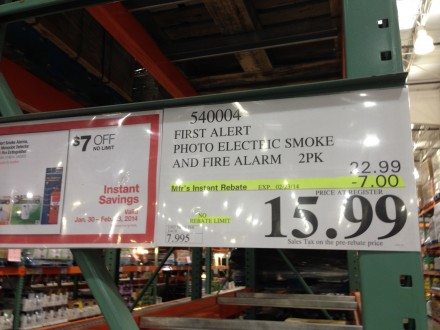
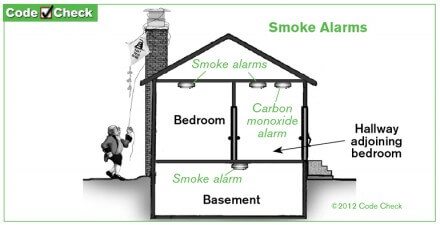
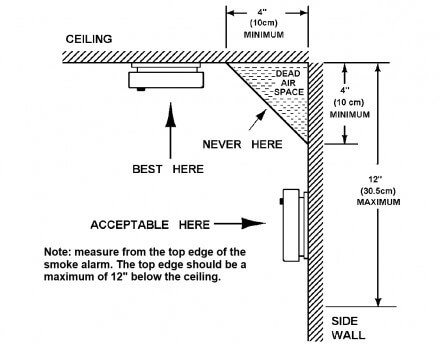
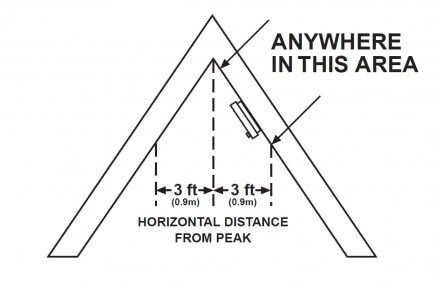
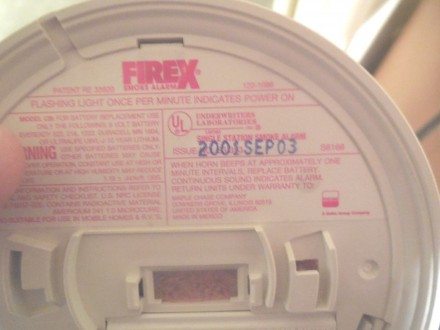
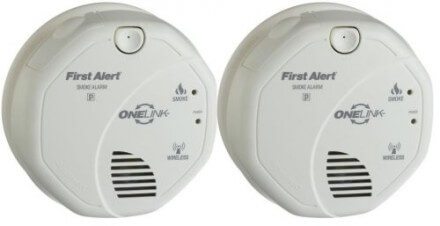
Bob
March 25, 2014, 5:27 am
Good to know that photoelectric are the ones to get !!
Gary Watlington
April 1, 2014, 8:15 pm
Great info gang! The sad thing is that most people never hink about the importance of their smoke alarm until they need it, by then it’s to late. Ionization and Photoelectric are “Greek” to the majority of people, and it doesn’t seem that many people, including the fire service, are pushing the importance of knowing the different types. People need to understand there’s more to smoke alarms, not just buying them and putting them up at the top of a door. Thanks again for a great blog and covering important smoke alarm info.
Gary Watlington
April 18, 2014, 5:47 pm
Great article and info! As a Firefighter for 20+ years I didn’t even know that there was a difference in smoke alarms until April of last year. Getting the knowledge and education out to the community about Ionization and Photoelectric smoke alarms must be a priority. It has been proven that the ionization alarms are causing people to die in home fires because of they’re slow response to smoldering fires and the fact that they produce so many nuisance alarms people take the batteries out or take them down providing NO detection. Photoelectric only as an approx 2-3% slower reaction time to flaming fires and has been documented to rarely produce nuisance alarms, they can also be installed in the Kitchen area as long as they properly installed at the right distance from cooking appliances. These also come with a silence/hush button that resets the alarm after around 10 mins in the event you do have a nuisance alarm. I don’t really like the idea of the combo alarms due to the fact that you’ve now taken the better technology and combined it with the older less effective technology. A fire can occur in any room, due to this fact I advise people to have maximum detection and install alarms in every room smoke alarms can be placed and heat detectors in other areas such as attics, laundry rooms, kitchens, furnace rooms, and along with smoke in the garage, todays homes are burning hotter and faster then ever before and you can only have 1-2 mins to escape safely once a fire is detected. Be sure to plan and practice a home escape plan, have 2 safe ways out, and have a fire extinguisher on every floor including the Master Bedroom. Be Prepared and Be Safe!
Bob
April 19, 2014, 9:27 am
Why do manufacturers recommend having both types of detectors installed on each floor?
Gary
April 20, 2014, 3:42 pm
Hey Bob, A lot of people think that having both type will detect both types of fire such as fast burning for ionization and slow burning or smoldering, which is the most deadliest, for photoelectric. Most all nuisance alarms come from ionization and is why people take down the alarm or remove the batteries and why when it’s really needed the alarms doesn’t give adequate warning if any at all. My opinion is that if you take older technology (ionization) that has been proven by studies not to give enough warning in several cases; even leading to deaths, and combine it with newer more reliable technology (photoelectric), than you have defeated the purpose….UNLESS the alarm comes with a silence or hush button people will still be plagued by the nuisance alarms from the ionization part and will continue to remove the batteries and take down the alarm. Photoelectric produces much less, if any, nuisance alarms and can even be place near, if not in, the kitchen, and these alarms also detect both types of fires with less than a 3% time difference if any for flaming fires. If you do decide to go with a combo, make sure it has one of these buttons. Regardless of type, you do want an alarm in each occupied bedroom, one in the hall of the sleeping areas, and at least one, if not more, on each floor. EARLY detection of a home fire is the difference between surviving or not and is why I promote having maximum, not minimum, smoke detection. The most important info is to be protected by one or the other types of alarms.
Bob
April 20, 2014, 6:10 pm
I replaced all 5 of my 1999 ionization smoke alarms (original when house was built) with photoelectric. One in each bedroom plus one in each hallway.
I just wanted to make sure I wasn’t missing something by not having a mixture of ion and photo alarms as recommended by the manufacturer. I find it odd that the manufacturer would recommend the cheaper ion alarms to be used as some of the 5 total.